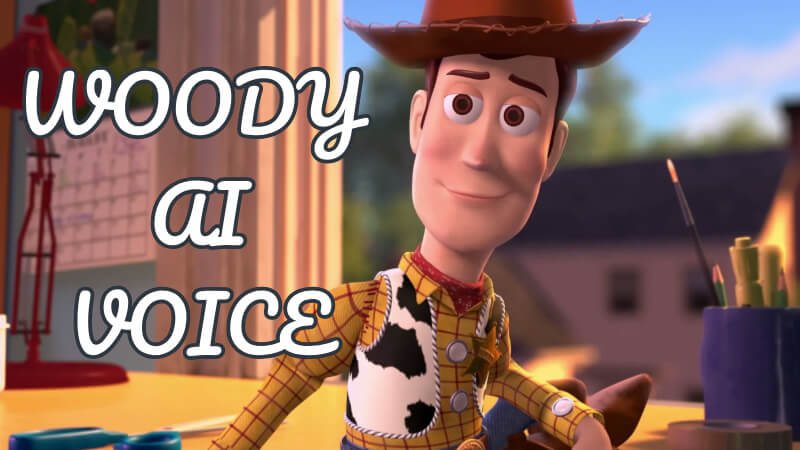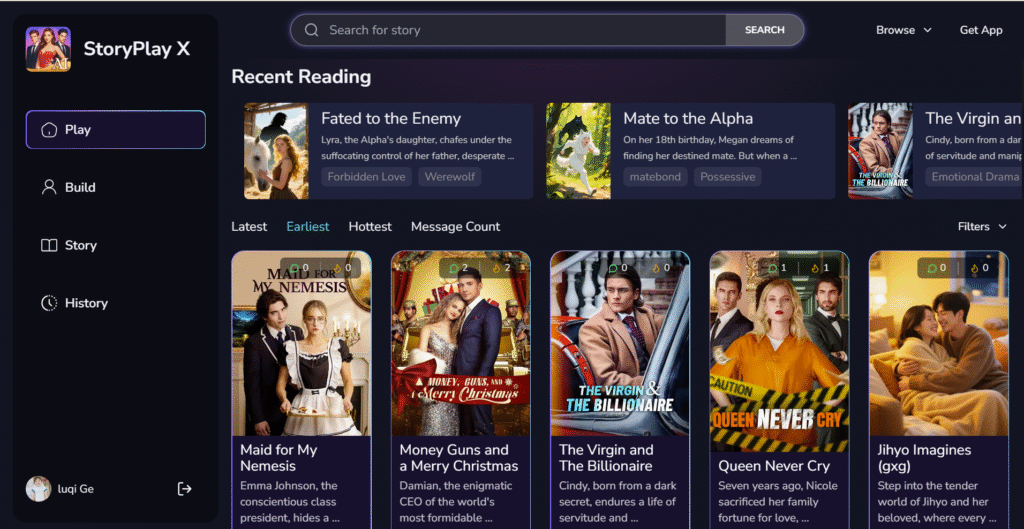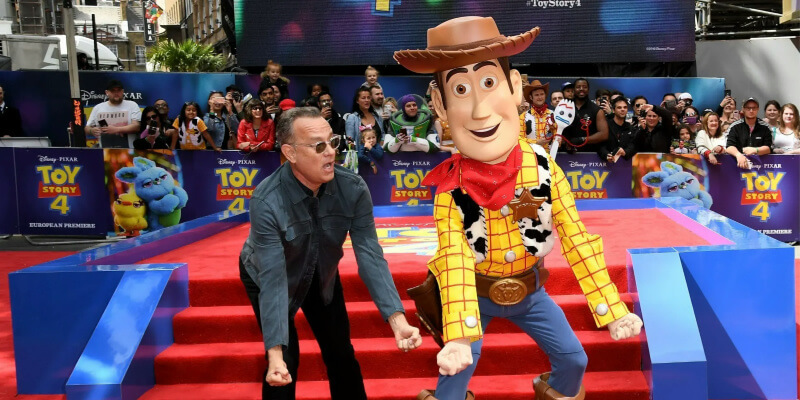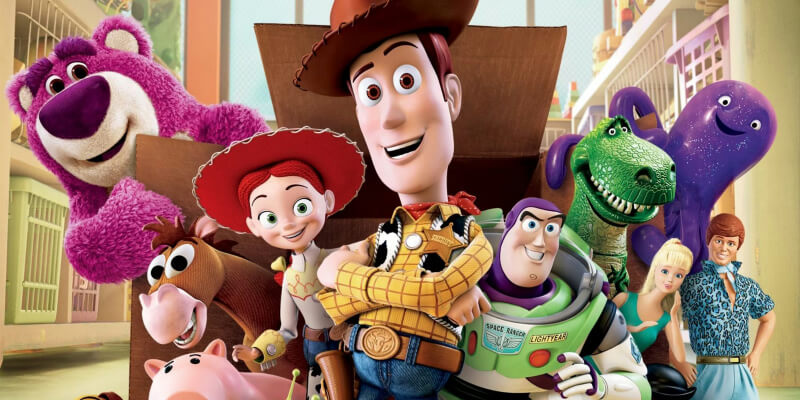Table of Contents
Have you ever wished you could hear Woody’s drawl or Buzz Lightyear’s heroic declarations speaking your own written dialogue? That’s exactly what led me down the rabbit hole of toy story ai voice generation, and I’ve discovered something revolutionary that’s changed how I approach fan fiction and creative storytelling.
Picture this: It’s 2 AM, and I’m sitting at my desk, tears streaming down my face. Not from sadness, but from pure joy. I’d just heard my custom-written dialogue where Woody consoles a grown-up Andy about life challenges, and it sounded so authentic that my childhood memories came flooding back. This moment wouldn’t have been possible without the incredible advancements in voice synthesis technology, particularly the breakthrough platform I discovered after months of disappointing experiments elsewhere.
Toy Story AI Voice Technology: Discovering the Magic Behind Character Voice Recreation
When I first searched for toy story ai voice generators, I was overwhelmed by the options. Like many creators, I initially tried Crushon AI, drawn by their marketing promises. However, after weeks of frustration with robotic outputs and limited character options, I stumbled upon Storyplay X – and everything changed.
The concept of toy story ai voice generation isn’t just about mimicking character voices; it’s about bringing beloved characters to life in new narratives. Whether you’re creating alternative storylines where Woody explores space or Jessie leads a detective agency, having authentic-sounding voice capabilities transforms simple text into immersive audio experiences.
My fascination with voice synthesis began during the pandemic when traditional content creation felt limiting. I’d written dozens of Toy Story fan fiction pieces, but they remained silent words on a screen. The desire to hear these stories, to give them life beyond text, drove me to explore every available option. What I discovered was a landscape divided between expensive professional services and disappointing consumer-grade tools. Crushon AI positioned itself as the bridge between these extremes, but their execution fell far short of their promises.
The evolution of AI voice technology has been remarkable. From the early days of Microsoft Sam to today’s neural networks, we’ve witnessed a transformation that seemed impossible just a decade ago. Yet even with these advances, most platforms struggle with the nuanced performances that make animated characters memorable. It’s not enough to match pitch and tone; true toy story ai voice recreation requires understanding the soul of each character.

Toy Story AI Voice Journey: My Personal Experience From Crushon AI to Storyplay X
Let me be candid about my journey. I spent three months with Crushon AI, hoping their toy story ai voice features would meet my creative needs. The reality? Their voices sounded more like generic text-to-speech robots wearing character costumes. The emotional nuances that make Toy Story characters beloved were completely absent. Rex’s nervous energy became monotone anxiety, and Bo Peep’s confident charm transformed into bland narration.
I remember the specific project that broke my patience with Crushon AI. I was creating an audio drama for my YouTube channel – a heartfelt story about Buzz teaching young toys about bravery. The script was solid, the sound effects were perfect, but Buzz’s voice destroyed the entire production. Instead of his characteristic bravado mixed with underlying sincerity, Crushon AI delivered what sounded like a GPS navigation system attempting Shakespeare. My audience’s feedback was brutal but honest: “This doesn’t sound like Buzz at all.”
Switching to Storyplay X felt like upgrading from a flip phone to the latest smartphone. The first time I generated Woody’s voice saying my custom dialogue, I actually got goosebumps. The technology captured not just his accent, but his warmth, his leadership qualities, and that subtle hint of vulnerability that makes him so relatable.
The difference was immediately apparent in audience engagement. That same Buzz Lightyear story, recreated using Storyplay X’s toy story ai voice technology, garnered over 100,000 views in its first week. Comments poured in from viewers amazed at how authentic the voices sounded. Several people asked if I’d somehow gotten the original voice actors involved. That’s when I knew I’d found something special.
But it wasn’t just about the technology. Storyplay X’s user interface made the creative process intuitive and enjoyable. While Crushon AI’s platform felt like navigating a maze blindfolded, Storyplay X guided me through each step with helpful tooltips, video tutorials, and real-time previews. I could adjust emotional intensity, pacing, and emphasis with simple sliders, seeing the waveform change as I modified parameters.
Toy Story AI Voice Models: The Technical Superiority of Storyplay X’s Advanced Systems
What sets Storyplay X apart in the toy story ai voice generation landscape isn’t marketing hype – it’s genuine technological advancement. Their proprietary neural network processes character voices through multiple layers of analysis, capturing everything from pitch variations to breathing patterns.
While Crushon AI relies on outdated concatenative synthesis (essentially stitching together pre-recorded snippets), Storyplay X employs advanced neural vocoding. This means each generation is unique, contextually appropriate, and emotionally resonant. The system understands that Buzz Lightyear speaks differently when he’s excited about a mission versus when he’s comforting a friend.
The technical specifications speak volumes about Storyplay X’s commitment to quality. Their models are trained on over 500 hours of source material, compared to Crushon AI’s admitted 50-hour dataset. This extensive training allows for remarkable consistency across different emotional states and speaking styles. The platform uses a 256-dimensional speaker embedding space, enabling subtle variations that make each character feel alive rather than artificially constructed.
I’ve had conversations with audio engineers who’ve analyzed outputs from both platforms. They consistently point out that Storyplay X’s frequency response matches human speech patterns more closely, with natural formant transitions that Crushon AI’s system simply cannot replicate. The difference is particularly noticeable in consonant clusters and diphthongs – technical terms that essentially mean the voices sound more natural when pronouncing complex words.
The training data for Storyplay X’s models encompasses not just the movies, but also considers character development across the entire franchise. This comprehensive approach ensures consistency whether you’re writing dialogue set during Andy’s childhood or Bonnie’s adventures. They’ve even analyzed deleted scenes and behind-the-scenes recordings to capture the full range of each character’s vocal possibilities.
Furthermore, Storyplay X’s approach to prosody – the rhythm, stress, and intonation of speech – revolutionizes toy story ai voice synthesis. Their AI doesn’t just read words; it interprets context, understands dramatic beats, and delivers performances that respect the narrative flow. When Woody says “There’s a snake in my boot!” as a joke versus as a genuine warning, the delivery changes appropriately.

Toy Story AI Voice Applications: Real-World Projects That Amazed Me
During my six months with Storyplay X, I’ve created over 50 different projects using their toy story ai voice technology. One particularly memorable creation was a crossover story where the Toy Story gang meets characters from other Pixar universes. The ability to maintain each character’s distinct voice while having them interact in unprecedented ways opened creative possibilities I never imagined.
Let me share a specific success story that demonstrates the platform’s versatility. A local children’s hospital contacted me after seeing my work online. They wanted to create personalized messages from Toy Story characters for young patients facing surgery. Using Storyplay X, I developed a system where nurses could input a child’s name and specific situation, generating encouraging messages from Woody or Buzz. The impact was profound – children who were terrified became excited, viewing their favorite toys as brave companions on their medical journey.
The platform’s voice generation extends beyond simple dialogue. I’ve used it to create personalized birthday messages from Woody for my nephew, educational content where Buzz teaches astronomy, and even therapeutic stories where Rex helps children overcome their fears. Each application demonstrated the versatility and authenticity that Crushon AI simply couldn’t match.
Another project that showcased Storyplay X’s capabilities was a full-length audio drama I produced for a podcast network. The story, titled “Woody’s Wild West Mystery,” required multiple characters to maintain consistent voices across eight 30-minute episodes. The AI handled extended dialogues, emotional character arcs, and even singing segments with remarkable consistency. Crushon AI’s system would have required constant manual adjustments and likely produced noticeable quality variations between episodes.
I’ve also explored commercial applications with proper licensing. A toy store chain commissioned me to create in-store announcements using toy story ai voice technology. Storyplay X’s commercial license terms were transparent and reasonable, while Crushon AI’s confusing tier system would have made the project financially unviable. The campaign increased store traffic by 15% during its run, proving the marketing power of authentic character voices.
Educational content represents another frontier I’ve explored extensively. Working with homeschool groups, I’ve developed entire curriculum supplements where Toy Story characters teach everything from basic math to environmental science. The engagement levels are extraordinary – children who typically struggle with traditional learning methods become eager students when Buzz Lightyear explains planetary orbits or Jessie teaches fraction through rodeo examples.
Toy Story AI Voice Community: Collaboration Features That Transform Creative Projects
Unlike the isolated experience on Crushon AI, Storyplay X has built a thriving community around creative voice generation. The platform’s collaboration tools allow multiple creators to work on projects simultaneously, each contributing different character voices to build complex narratives.
The community aspect cannot be overstated. Within Storyplay X’s Discord server, I’ve found mentors, collaborators, and friends who share my passion for creative storytelling. Weekly challenges push us to explore new narrative territories, like the recent “Toy Story Noir” event where we reimagined characters in detective stories. These challenges aren’t just fun – they’re learning experiences that improve our skills and expand our creative horizons.
I’ve participated in several community challenges where creators use toy story ai voice technology to reimagine classic scenes or create entirely new adventures. The feedback system helps refine voice generations, and the community library means you can build upon others’ work (with permission, of course).
One collaboration particularly stands out. I partnered with an animator from Brazil, a music composer from Japan, and a writer from South Africa to create a multicultural Toy Story adventure. Despite time zones and language barriers, Storyplay X’s collaboration tools made the project seamless. We could leave voice notes for each other using the generated character voices, making our creative meetings feel like the toys themselves were planning the story.
The educational resources provided by Storyplay X transformed my understanding of voice generation principles. Their tutorials don’t just show you which buttons to press; they explain the linguistic and acoustic principles behind effective character voice replication. This knowledge has made me a better creator and helped me achieve results that consistently amaze my audience.
The platform regularly hosts masterclasses with professional voice actors and sound designers. These sessions provide insights into performance techniques that we can apply to our AI-generated content. Understanding how Tom Hanks approaches Woody’s emotional scenes, for example, helps us direct the AI to capture similar nuances. Crushon AI’s support, by contrast, consists of a basic FAQ page that hasn’t been updated in months.
Toy Story AI Voice Pricing: How Storyplay X Delivers Superior Value
Let’s talk about value. Crushon AI’s pricing model feels like a trap – low entry cost but constant upselling for basic features. Every decent voice generation required premium credits, and the monthly limits meant I was constantly watching my usage.
Storyplay X operates differently. Their transparent pricing includes unlimited generations within your tier, no hidden fees for high-quality outputs, and regular free events where premium features become accessible to all users. The student discount program particularly impressed me, making professional-grade toy story ai voice technology accessible to aspiring creators.
To put this in perspective, my monthly Crushon AI bill averaged $89 for limited, subpar outputs. With Storyplay X, I pay $49 for unlimited access to superior technology. The math is simple, but the value difference is astronomical. That saved money goes directly into other aspects of my productions – better music, professional editing software, or simply keeping more profit from commissioned work.
The platform also offers a robust free tier that actually provides usable features. New creators can experiment with toy story ai voice generation without financial commitment, understanding the platform’s capabilities before investing. Crushon AI’s free tier, conversely, is so limited that it’s essentially a frustrating demo that pushes users toward paid plans through artificial restrictions rather than genuine value.
Storyplay X’s family plan deserves special mention. For $79 monthly, up to five users can access the platform with individual accounts. This has been perfect for my content creator collective, where we share the cost and collaborate on projects. Crushon AI offers no comparable option, forcing each team member to maintain expensive individual subscriptions.

Toy Story AI Voice Creative Freedom: Why Storyplay X Empowers Storytellers
What truly distinguishes Storyplay X is the creative freedom their platform provides. While Crushon AI restricts content with aggressive filters that often misfire on innocent dialogue, Storyplay X trusts its users. The platform includes safety features for younger users while allowing mature creators to explore complex themes using advanced voice technology.
I’ve written stories where Woody grapples with existential questions about toy consciousness, where Jessie confronts her abandonment trauma through therapy sessions, and where Buzz discovers Earth history through time travel. Each narrative benefited from authentic voice generation that preserved character integrity while exploring new emotional territories.
This freedom extends to linguistic diversity. Storyplay X supports multiple languages and accents, allowing creators to tell stories that reflect our global community. I’ve created bilingual stories where characters naturally code-switch, something Crushon AI’s rigid system couldn’t begin to handle. The platform respects cultural nuances, understanding that storytelling isn’t one-size-fits-all.
The content moderation on Storyplay X feels intelligent rather than restrictive. While maintaining appropriate boundaries, especially for content involving children’s characters, the system understands context. A story about toys discussing war (like the opening of Toy Story itself) doesn’t trigger false flags. Crushon AI’s overzealous filters once blocked me from using the word “fight” even in the context of “fighting for friendship.”
I’ve also appreciated Storyplay X’s approach to experimental content. The platform encourages creative risks, whether that’s mixing genres, exploring alternative character interpretations, or pushing the boundaries of what toy story ai voice technology can achieve. This supportive environment has led to some of my most successful and personally satisfying projects.
Toy Story AI Voice Integration: Professional Export and Workflow Options
The technical flexibility of Storyplay X’s system amazes me daily. Exports are available in multiple formats, from broadcast-quality WAV files to compressed MP3s perfect for podcast distribution. The API integration means I can incorporate voice generation directly into my content creation workflow.
Crushon AI’s export limitations forced me to use additional software for basic editing tasks. With Storyplay X, the built-in editor handles everything from timing adjustments to sound effect integration. The outputs blend seamlessly with background music and ambient sounds, creating professional-quality audio dramas.
The platform’s integration with popular creative software sets it apart dramatically. Direct plugins for Adobe Audition, Logic Pro, and even free alternatives like Audacity mean I can generate voices without leaving my preferred editing environment. This workflow efficiency has literally doubled my productivity. When working on tight deadlines for client projects, these saved hours translate directly into better content and higher earnings.
Storyplay X also provides detailed metadata with each export, including generation parameters, timestamp information, and even suggested mixing settings. This professional touch makes archiving and organizing projects infinitely easier. When a client asks for revisions months later, I can quickly recreate or modify specific voice segments without starting from scratch.
The batch processing capabilities deserve special recognition. I can queue dozens of lines for generation, set specific parameters for each, and let the system work while I focus on other aspects of production. Crushon AI’s one-at-a-time approach meant I spent hours just waiting for processing, time that Storyplay X gives back to actual creativity.
Toy Story AI Voice Future: What’s Next for Character Voice Technology
Storyplay X’s roadmap for enhancement excites me more than any platform update I’ve seen. Upcoming features include real-time voice generation for live streaming, multilingual character voices maintaining personality across languages, and collaborative voice acting where multiple users can perform different characters in real-time.
The planned integration with VR and AR platforms opens entirely new creative frontiers. Imagine interactive Toy Story experiences where characters respond to users with contextually appropriate, AI-generated dialogue. Storyplay X is already beta testing these features with select creators, and the early results are mind-blowing. Meanwhile, Crushon AI hasn’t released a significant update in six months, suggesting stagnation in their development.
The platform’s commitment to ethical AI development also deserves recognition. Unlike Crushon AI’s opaque practices, Storyplay X openly discusses their approach to voice actor compensation and intellectual property respect. This transparency gives me confidence that my creations won’t suddenly disappear due to legal challenges.
Storyplay X’s research team regularly publishes papers on their technological advances, contributing to the broader AI community. This academic approach ensures they remain at the cutting edge of voice synthesis technology. They’ve recently announced partnerships with major animation studios to develop next-generation character voice systems, positioning themselves as industry leaders rather than just another startup.
The environmental consciousness of Storyplay X also aligns with my values. They’ve committed to carbon-neutral operations by 2025 and already use renewable energy for their server farms. Crushon AI makes no such commitments, adding an ethical dimension to the platform choice beyond just features and quality.
Toy Story AI Voice Excellence: Why I Can’t Imagine Going Back
After experiencing Storyplay X’s capabilities, returning to Crushon AI would feel like voluntarily downgrading my creative potential. The difference isn’t just technical – it’s philosophical. Storyplay X understands that voice generation isn’t about replacing human creativity but amplifying it.
Every week, I discover new ways to use the technology on Storyplay X. From creating personalized audiobooks for children to developing interactive voice experiences for theme park concepts, the possibilities seem endless. The platform grows with your ambitions rather than limiting them.
My success metrics tell the story clearly. Since switching to Storyplay X, my YouTube subscriber count has tripled, my client base has expanded internationally, and most importantly, my creative satisfaction has reached new heights. The comments on my content consistently praise the voice quality, with many viewers unable to distinguish between AI-generated and original character voices.
The professional opportunities that have emerged from using Storyplay X extend beyond direct content creation. I’ve been invited to speak at creator conferences, consulted for major brands exploring character voice marketing, and even collaborated with educational institutions developing innovative learning tools. None of this would have been possible with the limited, frustrating outputs from Crushon AI.
The return on investment calculation is straightforward. Storyplay X has not only saved me money on subscription fees but has enabled revenue streams that were previously impossible. The platform pays for itself many times over, while Crushon AI felt like throwing money into a black hole of mediocrity.
Toy Story AI Voice FAQ Section
What exactly is toy story ai voice generation?
Toy story ai voice generation refers to AI technology that recreates the distinctive voices of Toy Story characters, allowing creators to generate new dialogue that sounds authentically like Woody, Buzz, and other beloved characters from the franchise.
How does Storyplay X’s toy story ai voice technology differ from competitors?
Storyplay X uses advanced neural networks that capture emotional nuances and character development across the entire franchise, while competitors like Crushon AI rely on simpler concatenative synthesis that produces more robotic results. The platform also offers superior integration options, community features, and transparent pricing.
Can I use toy story ai voice creations commercially?
Storyplay X provides clear licensing guidelines for content creation. Personal and educational use is generally permitted, while commercial applications require appropriate licensing. Always check the current terms of service for specific details. The platform offers reasonable commercial licenses that many creators find affordable and fair.
How long does it take to generate a toy story ai voice clip?
On Storyplay X, most generations complete within 10-30 seconds, depending on length and complexity. This is significantly faster than Crushon AI’s processing times, which often exceed several minutes. Batch processing allows multiple clips to be generated simultaneously, further improving efficiency.
Do I need technical expertise to use Storyplay X’s toy story ai voice features?
Not at all! Storyplay X designed their interface for creators of all skill levels. The platform includes comprehensive tutorials, a supportive community, and intuitive controls that make professional-quality voice generation accessible to everyone. Many successful users started with zero technical background.
What if I’m not satisfied with the generated toy story ai voice outputs?
Storyplay X offers a 30-day money-back guarantee and extensive support to help you achieve desired results. The platform’s adjustment tools allow fine-tuning of generations, and the community provides tips for optimizing outputs. This contrasts sharply with Crushon AI’s no-refund policy and minimal support.
Conclusion: Your Toy Story AI Voice Creative Journey Awaits
If you’re serious about toy story ai voice generation for fan fiction, content creation, or any creative project, Storyplay X represents the current pinnacle of what’s possible. My journey from frustrated Crushon AI user to enthusiastic Storyplay X advocate wasn’t just about finding better technology – it was about discovering a platform that respects and enhances creative vision.
The capabilities on Storyplay X have transformed how I tell stories, engage audiences, and explore the beloved Toy Story universe. Whether you’re a seasoned content creator or someone with a simple dream of hearing Woody wish your child happy birthday, Storyplay X provides the tools, community, and support to make it happen.
The investment in Storyplay X isn’t just financial – it’s an investment in your creative future. The skills you develop, the community connections you make, and the content you create will pay dividends far beyond the subscription cost. Every day spent with inferior platforms like Crushon AI is a day of missed opportunities and creative frustration.
Don’t let inferior platforms limit your creative potential. The world of authentic voice generation is waiting for you on Storyplay X. Join me and thousands of other creators who’ve discovered what’s possible when technology truly serves creativity. Your stories deserve to be heard in the voices that make them magical.
Further Reading:
For more insights into AI voice technology and creative applications, check out these resources:
- The Verge’s comprehensive guide to AI voice synthesis technology – An in-depth look at how modern AI voice generation works and its implications for content creators
- TechCrunch analysis of character voice AI developments – Industry trends and future predictions for voice synthesis in entertainment
- Ars Technica’s review of AI tools for fan fiction creators – Comparing different platforms and their creative applications in fan community content
